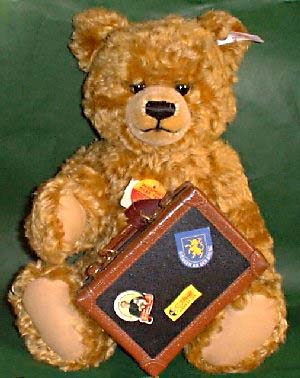|---3,500,000 BC human origin
|
|
|
|---300,000 BC evidence of counting using notches in animal bones
|---250,000 BC 250,000 oldest surviving wool tool
|---100,000 BC the Chinese invented kites that carried scouts on reconnaissance
|---40,000 BC hunters, gatherers settled in Greece
|---20,000 BC the bow and arrow is developed by the Cro-Magnon people
| start of the Ice Age
|---10,000 BC end of the last Ice Age
|---8,000 BC domestication of the animals
|---7,000 BC agiculture starts in the americas
|---4,000 BC wheels is used on the carts
|---3,500 BC the Potter’s wheel is used
|---3,100 BC the rice is domesticated in the region near the Yangtze River
|---3,000 BC dams are used
|---2,900 BC the Bronze age starts in Greece
|---2,800 BC the plywood is invented in Egypt
|---2,000 BC the spoke wheel is used for the first time
|---1,800 BC the lever is used
|---1,500 BC the Phoenicians develop the alphabet
|---700 BC the Invention of the Aqueduct
|---500 BC the Pythagoras develop the use of geometry
|---476 BC the Roman empire fell
|---400 BC the water wheel is made
|---387 BC a academy is started in Athens
|---350 BC the Chinese developed the printing press
|---332 BC the City of Alexandria in Egypt
|---200 BC the lever is first used
|---50 Vitruvis writes ten volumes compendium of Roman engineering
|---105 invention of paper
|---400 the windmill is first used in China
|---1450 the Chinese developed the printing press
|---the printing press that uses movable metal type is invented by Johannes Gutenburg
|---1588 the first engineering handbook is written
|---1607 the first permanent English settlement was Jamestown
|---1622the slide rule is invented by William Oughtred
|---1662 theory of elasticity is developed by Robert Hooke
|---1687 the Newton law is written
|---1709 the first piano is built
|---1752 Benjamin Franklin found that lighting was a form of electricity
|---1769 the steam engine was built
|---1776 USA declared it independence
|---1783 Montgolfier brothers launched the first public balloon flight
|---1784 Elisabeth Thible was the first woman to make a balloon flight
|---1785 french aeronaut Jean-pierre flew on the first flight across the English channel
|---1793 the Cotton Gin was invented by Eli Whitney
|---1795 the metric system is adopted in france
|---1799 the first battery was built by Alessandro Volta
|---1804 Sir George Cayley built and flew the world’s first successful model glider
|---1807 the steam ship was built by Robert Fulton
|---1814 George Stephenson built the first steam locomotive
|---1827 Ohm’s law
|---1830 the first ever passenger train service began
|---1836 the first telegraph was used
|---1856 the process for making steel was developed
|---1876 the telephone was invented by Alexander Graham Bell
|---1879 the light bulb was invented by Thomas Edison
|---1884 the institute of electrical engineers was founded
|---1895 the X-ray is discovered
|---1896 Samuel P. Langley launched the first steam-powered model aircraft
|---1899 Wilbur Wright wrote the Smithsonian that said human flight was possible
|---1900 the wright brother flew their first of several gliders
|---1902 the air conditioning was invented
|---1903 the Wright brother completed the first powered, piloted controlled flight
|---1905 the Wright’s Flyer 3 became the world’s flight practical airplane
|---1907 Paul Cornu, a French inventor, flew the first helicopter, lasted 20 seconds
|---1909 the first flight across the English Channel By Louis Bleriot
|---1912 Harriet Quimby was first female pilot to fly across the English Channel
|---1924 the St. Petersburg-Tampa Airboat Line became the first scheduled airline service
|---1915 Albert Einstein published the General Theory of Relativity and NACA started
|---1919 the first nonstop flight across the Atlantic
|---1920 the first Transcontinental mail service arrived in New York from San Francisco
|---1923 first nonstop coast-to-coast airplane was between New York and San Diego
|---1924 the first round-the-world flight was completed by Douglas world Cruiser
|---1926 the first flight across the North Pole by Richard E. Byrd
|---1927 first solo flight across the Atlantic by Charles Lindbergh
|---1928 the first nonstop crossing of the pascific
|---1929 first flight over the south pole
|---1932 Amelia Earhart became the first woman to fly solo across the Atlantic
|---1935 the first airway traffic control went into affect
|---1937 first jet engine was built
|---1939 the Radar was developed by the British
|---1940 the penicillin drug was make
|---1942 the worlds first operational Jet-powered fighter took to air
|---1944 V-2 rocket first used in combat
|---1945 B-29 Enola Gay dropped an atomic bomb on Hiroshima
|---1947 United States Air Force was formed as a separate service
|---1949 this Boeing B-509 made the first nonstop around-the-world flight
|---1953 Mount Everest was climbed for the first time
|---1954 the U.S. Air Force Academy was created
|---1957 a jet flew around the world for the first time
|---1958 NASA was established
|---1961 Alan Shepard was the first American in space
|---1963 the X-15 aircraft set an altitude record of 67 miles
|---1968 Apollo 8 circumnavigated the Moon
|---1969 Apollo 11 landed on the Moon
|---1971 the worlds first space station
|---1973 NASA launched the Skylab orbital workshop into orbit
|---1977 apple computer releases the apple 2 computer
|---1981 the first Space Shuttel orbiter, flew into Earth orbit
|---1988 the human-powered aircraft flew around the world nonstop
|---1989 the B-2 stealth bomber made its first flight
|---1991 the first flight of the Yf23 V-22 Osprey tiltrotor occurred
|---1998 the first part of the International Space Station was assembled in orbit
|---2000 the international Space Station crew arrived in orbit
|---2002 Bell Digital Jukebox
|---2004 Apple I-Pod (40 GB)
